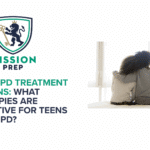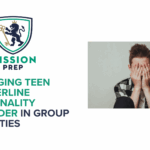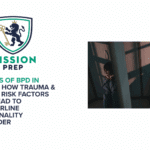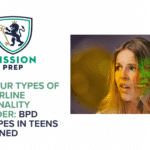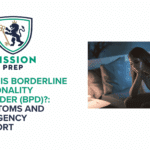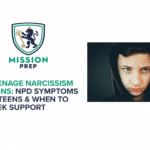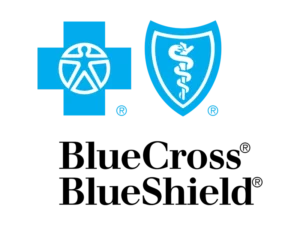Teenage Narcissism: What Narcissistic Personality Disorder Is & Signs of NPD in Teens

Narcissistic behavior is something we may all slip into from time to time, but with teenagers, it sometimes can seem to happen a lot more often. The challenge for parents is working out what’s really going on: are they simply moving through the normal stages of growing up, or is it the start of something deeper?
Teenage narcissism can understandably be a concern for parents. An overly developed sense of self-importance, lack of empathy, manipulation, and a seemingly constant need for admiration are not easy traits to live with. But is it just a phase or signs of NPD in teens? Parents can find reassurance and support by seeking professional mental health advice. When targeted early, teens can develop a more realistic self-image, greater empathy, and better relationships.
This page also works as a useful guide to understanding teenage narcissism, as it explores:
- What narcissistic personality disorder is
- The different subtypes of NPD
- If a teen can be diagnosed with NPD
- Potential NPD signs in teens
- When other conditions overlap with NPD
- What to do you if you notice NPD in your teen
- Where you can get help for teen NPD

What Is Narcissistic Personality Disorder?
Narcissism is one of those words that’s become part of everyday language, but it doesn’t always get used in the right way. Psychology has come a long way in giving us terms to describe patterns of behavior, but the downside is that these labels sometimes get thrown around too casually.
For example, someone may act selfishly once or twice, and suddenly they’re branded a “narcissist.” This might sound harmless on the surface, but it not only misrepresents the person, but also reduces a complex clinical condition to a casual insult.
Narcissistic linked behavior on its own is common. We all show mild examples of this type of behavior sometimes,1 perhaps by talking over someone, wanting extra attention, or putting our own needs first. Annoying, yes, but this behavior doesn’t mean someone has a disorder.
Narcissistic personality disorder (NPD), on the other hand, is a recognized diagnosis in the DSM-5, the manual clinicians use to classify mental health conditions. NPD describes a long-standing pattern of behaviors that shape the way a person relates to others and themselves, often in ways that create both conflict and inner struggle. However, there are different types of NPD that can influence these behaviors, which we will take a closer look at next.
Are There Different Types of NPD?
While there’s only one official diagnosis of NPD, clinicians typically refer to different subtypes of the disorder when considering treatment, which include:2
Grandiose (overt) narcissism
This type of narcissism is the one most people think of when they hear the word “narcissist.” It describes someone who has to be noticed, craves admiration, and acts bigger than life, even if underneath they’re just as insecure as anyone else.
An example would be someone who constantly brags to keep the spotlight on themselves.
Vulnerable (covert) narcissism
This subtype is typically quieter and harder to spot. On the outside, it can look like shyness or being sensitive, but deep down, it’s the same pull for recognition, just wrapped up in insecurity and worry about rejection.
For example, someone who withdraws completely after even mild criticism.
Communal narcissism
This type can initially throw people off. It’s the person who wants to be seen as the most giving or the most moral, always putting themselves in the role of the “good one.” However, they’re chasing the admiration that comes with their actions.
This behavior can be seen a lot in today’s society, for example, influencers who volunteer for the homeless but make sure everyone knows how selfless they’ve been.
With this foundation in mind, it’s worth looking at how all of this information connects to teenagers. Adolescence is a stage where traits that might look narcissistic can surface for very different reasons. Therefore, understanding the difference between typical teen behaviors and genuine narcissism can make a big impact on how parents respond.
Why Narcissistic Behavior in Teens Isn’t Always NPD
For those of us who have teens or work closely with them, you’ve probably noticed behaviors that look a little narcissistic from the outside. After all, we were all teens once, so most of us can remember obsessing over the mirror or putting our own needs first without much thought for anyone else.
In fact, the DSM-5 makes it clear that narcissistic-looking behaviors in teens are often part of normal development.3 It also notes that these traits in adolescence don’t automatically point to NPD, as long-term studies show they usually fade as young people mature.3
But why do these narcissistic-like behaviors happen in the first place? We take a look at potential theories for why in the following sections.
Erikson and Identity Formation
Psychologist Erik Erikson saw adolescence as a crucial stage of development that he called “identity versus role confusion.”4 During this time, young people are trying to answer the big question: Who am I? Therefore, they typically experiment with roles and beliefs, often bouncing between different ones as they search for a stable sense of self.
We should remember that this process is quite intense, meaning it’s common for teens to appear more self-absorbed than at other ages. Parents may see behavior that feels self-centered, but in most cases, it reflects a normal and temporary phase of development.
Elkind and Adolescent Egocentrism
Developmental researcher David Elkind explained how teenage thinking itself can fuel narcissistic-looking behaviors.5 His concept of adolescent egocentrism described the way teens often believe they are constantly being observed and judged. This idea of an “imaginary audience” can be the reason why some teens may be overly sensitive about appearance and easily embarrassed.
He also described the personal fable, which focuses on teens belief that their feelings and struggles are unique and set apart from everyone else’s. For example, teens may dismiss advice because “You don’t understand,” or they may take risks under the assumption that bad outcomes only happen to other people. Both patterns exaggerate self-focus because of how adolescent thinking is wired.
Can a Teen Be Diagnosed With NPD?
Diagnosing NPD in teens is a complex process that requires set rules, but simply put, a diagnosis of NPD in someone under 18 is very rare.6 This is because clinicians are typically cautious that the very same behaviors that raise alarm bells about NPD are also tied up in the normal process of adolescence. Therefore, unless these traits have been consistent for at least a year and are causing obvious damage in different areas of life, NPD diagnosis usually isn’t on the table.
But of course, this doesn’t mean narcissism appears out of nowhere when they reach adulthood. Researchers have shown that signs of NPD can begin forming surprisingly early, sometimes as young as eight.7 Yet, these signs tend to become more fit for a strong diagnosis in the later teen/early adulthood period. This is why most people who are eventually diagnosed receive a diagnosis as adults, not as kids.
Let’s take a step back a bit, because this information might be a little confusing. On one hand, we’ve just said that adolescence is full of developmental quirks that can mimic narcissism. On the other, we know these traits can sometimes be the early signs of NPD. So, as a parent, you’re perhaps left wondering: Should I just chalk this up to teenage growing pains, or should I be worried?
The key here is monitoring your teen. We cover some signs to look out for next.
Potential NPD Signs That Are Worth Keeping an Eye On
As mentioned, most teens have flashes of self-focus, but when certain behaviors don’t ease up or start to cause real damage, it’s worth paying closer attention.
The following is a table of signs of NPD in teens that, when consistently observed over a longer stretch of time, could indicate narcissism.
Potential Sign | What It Means | You Might Notice |
Constant need for admiration | Wanting recognition isn’t unusual, but when a teen struggles to function without being admired or praised, this can be a warning sign | Fishing for compliments and becoming irritable when they don’t get them Steering conversations back to their own achievements Showing visible discomfort when someone else is in the spotlight |
Lack of empathy | Teenagers are still learning to step into other people’s shoes, but ongoing indifference to others’ feelings is different | Dismissing a friend’s upset with little concern Making hurtful comments without recognizing the impact Rarely offering comfort or understanding in difficult moments |
Extreme reactions to criticism | Nobody likes being corrected, yet most young people move on fairly quickly. If feedback always sparks an intense reaction, this may be a red flag | Responding with anger or defensiveness to mild correction Blaming others every time something goes wrong Refusing to take responsibility even when it’s obvious |
Manipulative or controlling behavior | Some teens test boundaries, but when manipulation becomes a pattern, it’s cause for concern | Using guilt or charm to get their way Repeating stories to always come out looking good Making others feel unsure about what really happened |
Preoccupation with image or status | Caring about appearance or popularity is common, but when it becomes a full-time focus, it can tip into unhealthy territory | Constantly seeking validation through looks, likes, or achievements Comparing themselves to peers and becoming upset when they don’t measure up Avoiding activities where they might not shine |
Avoiding accountability | Owning mistakes is part of growing up, but a consistent refusal to do so may be a warning sign | Blaming others while refusing to look at their own part Giving apologies that feel insincere, or none at all Changing the subject to dodge responsibility |
Sense of entitlement | Believing they deserve special treatment can nudge behavior beyond the ordinary teenage pushback | Expecting privileges that others don’t get Acting as if rules don’t apply to them Reacting with anger when asked to contribute or follow through |
Let’s reiterate the point: noticing one or two of these behaviors doesn’t automatically mean your teen has NPD, but what matters is the pattern. If the same signs keep appearing in different areas of life, perhaps at home or at school, and they’re persistent rather than passing, it’s perhaps worth keeping a closer eye.
The aim is to monitor these behaviors, and if they’re still present in late adolescence, then professional support might help bring clarity and advice.
When Narcissistic-Looking Behavior Might Be Something Else
We know – we’re adding another layer of detail to an already complex topic, but it’s also something that needs to be addressed if you’re worried about your teen. Sometimes, the behaviors you’re seeing may be driven by something completely different from NPD. For instance, your teen may be showing signs similar to narcissism if they’re experiencing mental health conditions such as the following.
Depression
If your teen starts snapping at you or brushing off conversations as if you don’t matter, it’s easy to think they’ve stopped caring. But depression and low self-esteem can twist how a young person sees themselves and everyone around them. Therefore, what may come across as arrogance or disinterest could be a heavy mix of shame and exhaustion.
For example, a teen who rolls their eyes when you ask how their day went might not be dismissing you. Instead, they might be struggling with thoughts like I’m failing, and I don’t want to admit it. Instead of asking for reassurance, they might shut down, which, to a parent, can feel like coldness. This is why what looks like I don’t care about anyone else could actually mean I can’t cope with myself right now.
Trauma and Past Experiences
If your child has been through something unsettling, like a tragic loss or serious bullying, their behavior may harden. For example, you might see them demanding more attention than usual or pulling away when you try to get closer. On the surface, it might seem entitled, like nothing is ever enough. But underneath, it could be a survival strategy.
Trauma often leaves teens hyper-alert. So, when they act controlling or defensive, it can be their way of saying, I need to feel safe, and I don’t trust that safety will come from anyone else. To a parent, this may look a lot like narcissism, when really it’s about trying to keep the world predictable after it once felt chaotic.
Other Mental Health Conditions
Anxiety, bipolar disorder, and ADHD can all overlap with behaviors that look narcissistic.8 For example:
- With anxiety, your teen may appear wrapped up in themselves, talking constantly about how others see them, or refusing to join in social situations. It’s often not superiority driving this; it’s fear of being judged.
- With bipolar disorder, bursts of inflated confidence can take over, where your teen may insist things like they’re “brilliant” or “unstoppable.” Once this mood shifts, the grandiosity often vanishes.
- With ADHD, constant interruptions or seeming not to listen can look dismissive, when in reality their attention is likely jumping elsewhere and they’re not meaning to push people aside.
If your teen’s behavior is being fueled by other mental health conditions, the support they need will be very different from what helps with NPD. This is why jumping to the narcissism label too quickly could leave both you and your teen feeling lost.
The point here isn’t for you to diagnose your child, but to recognize that narcissistic-looking behavior doesn’t always mean narcissism. By understanding the possible roots of certain actions, you’re better placed to get your child – and yourself – the right kind of support.

Mission Prep: Professional Help for Teen Mental Health Issues
If you’ve reached the point where you’re worried about whether your teen’s behavior is typical or something more, you don’t have to figure it out alone. At Mission Prep, we specialize in working with teenagers who are struggling with challenges like depression, anxiety, ADHD, bipolar disorders, and, of course, NPD.
Our team uses approaches that fit the situation, steering firmly away from the one-size-fits-all approach. We use a blend of therapies such as CBT, DBT, family therapy, and group support to help teens build healthier ways of relating to themselves and others. We also aim to use these therapies to give parents the guidance they need along the way.
Mission Prep also aims to provide care that meets families where they are. For some, this means a safe and structured inpatient program where teens can step out of daily pressures and focus fully on healing. For others, it’s our intensive outpatient program, which allows them to stay at home and in school while still receiving focused therapy and support several times a week.
If you’re ready to take the next step, reach out to Mission Prep today, not just for your teen’s wellbeing, but for your own peace of mind as a parent.
References
- Villines, Z. (2023, April 18). Examples of narcissistic behavior. Medical News Today. https://www.medicalnewstoday.com/articles/example-of-narcissistic-behavior#definition
- Weinberg, I., & Ronningstam, E. (2022). Narcissistic personality disorder: Progress in understanding and treatment. FOCUS, 20(4), 368–377. https://doi.org/10.1176/appi.focus.20220052
- American Psychiatric Association. (2024, January 30). What is narcissistic personality disorder? American Psychiatric Association. https://www.psychiatry.org/news-room/apa-blogs/what-is-narcissistic-personality-disorder
- Orenstein, G., & Lewis, L. (2022, November 7). Erikson’s stages of psychosocial development. StatPearls Publishing. https://www.ncbi.nlm.nih.gov/books/NBK556096/
- Pedersen, T. (2024, August 20). How to deal with adolescent egocentrism. Psych Central. https://psychcentral.com/health/adolescent-egocentrism
- Biskin, R. S. (2015). The lifetime course of borderline personality disorder. The Canadian Journal of Psychiatry, 60(7), 303–308. https://doi.org/10.1177/070674371506000702
- Mitra, P., Fluyau, D., & Torrico, T. J. (2024, March 1). Narcissistic personality disorder. StatPearls Publishing. https://www.ncbi.nlm.nih.gov/books/NBK556001/
- Psychology Today. (n.d.). When narcissistic behavior is caused by something else. https://www.psychologytoday.com/us/blog/love-in-the-age-narcissism/202210/when-narcissistic-behavior-is-caused-something-else

